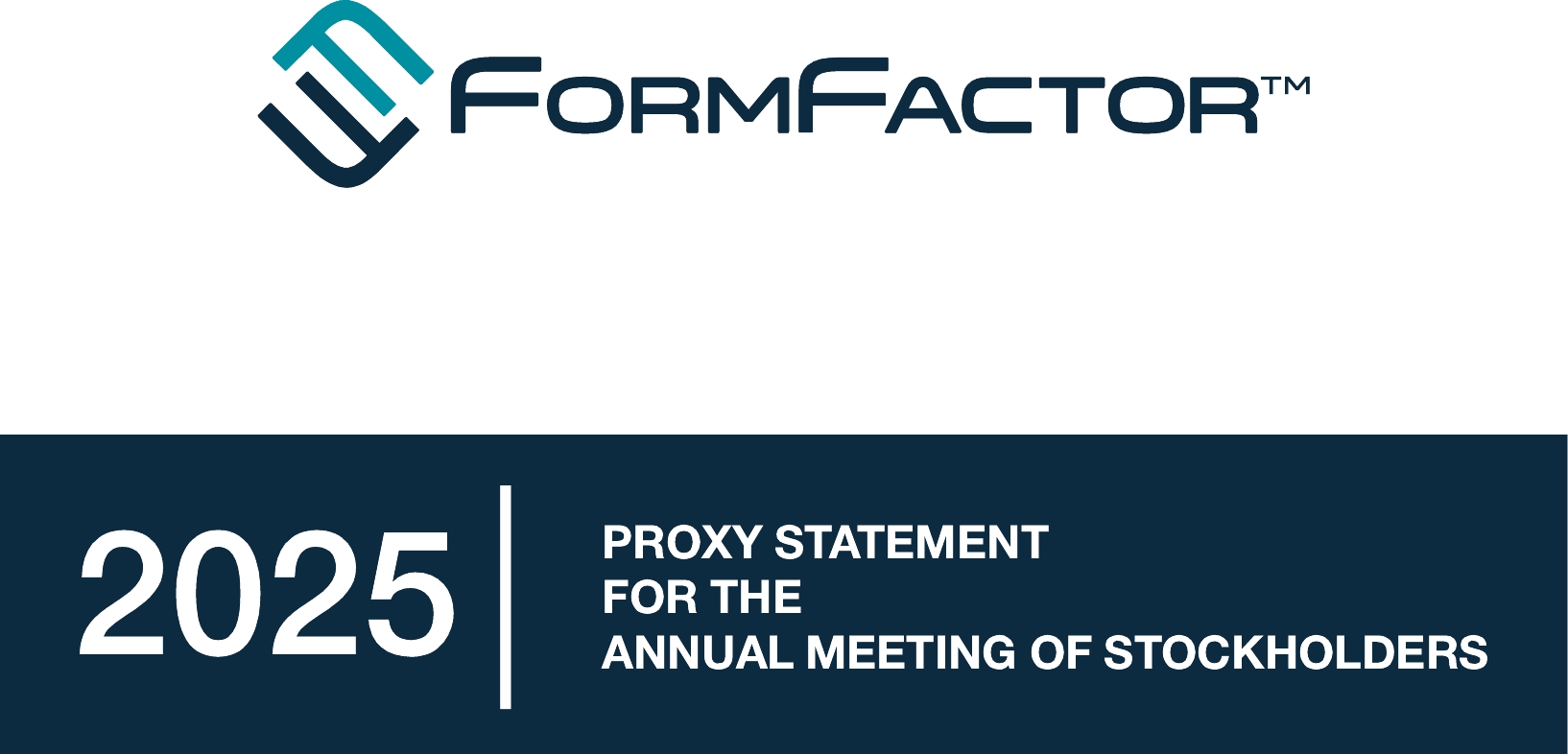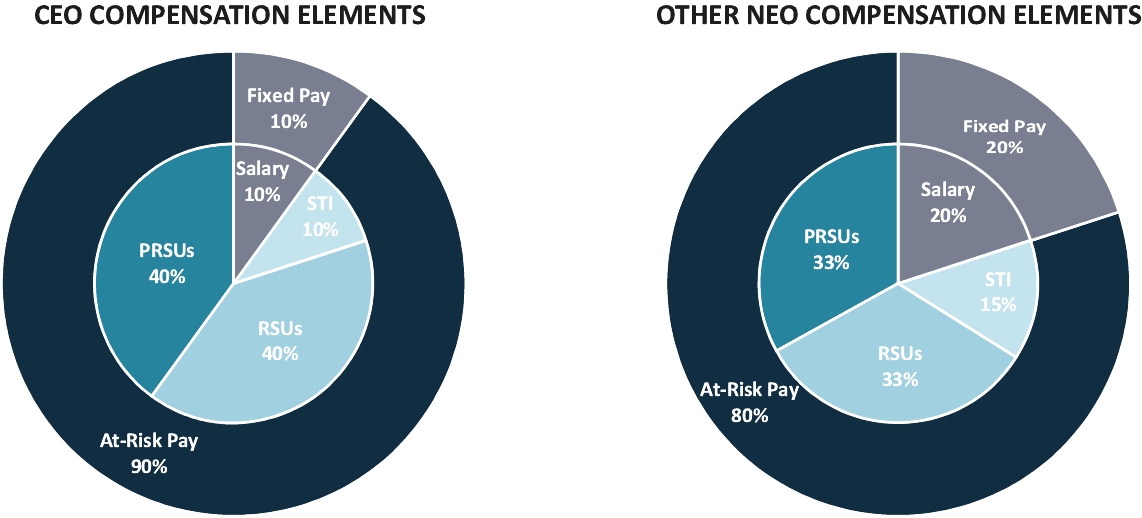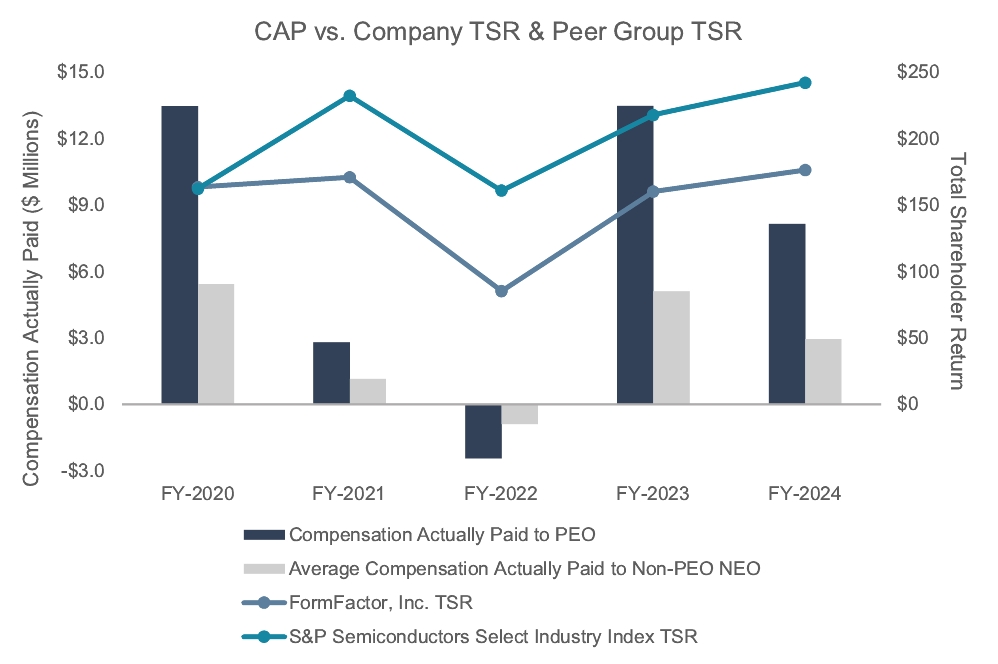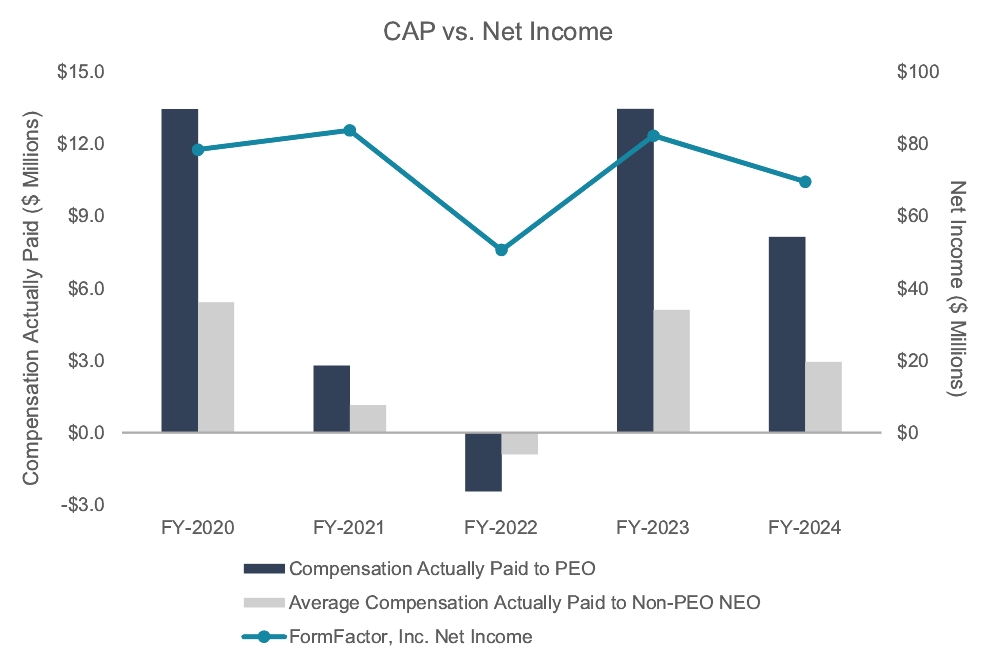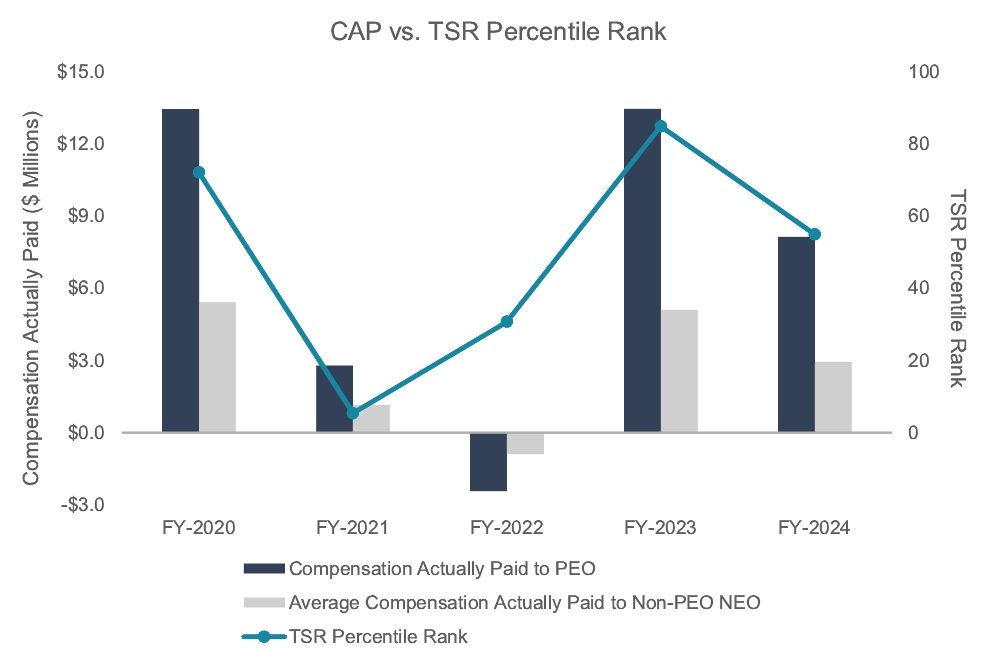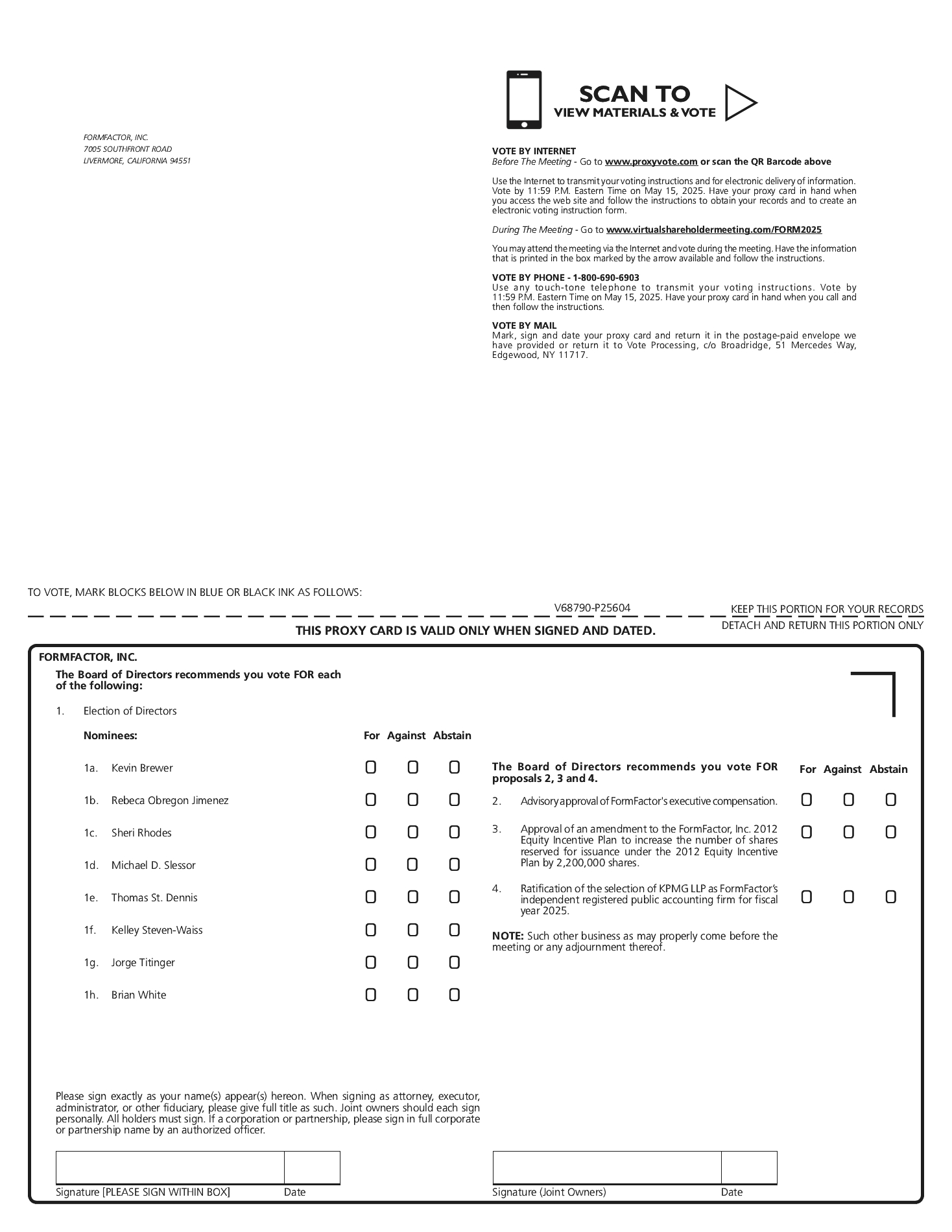Dear Fellow Stockholders,
It is my pleasure to invite you to attend the 2025 Annual Meeting of Stockholders of FormFactor, Inc. on Friday May 16, 2025 at 3:00 p.m., Pacific Daylight Time. Our Annual Meeting will again be conducted online via a live webcast, as we have found a virtual meeting provides greater accessibility and inclusivity for all stockholders; you will be able to attend the Annual Meeting and vote online during the meeting by visiting www.virtualshareholdermeeting.com/FORM2025.
We encourage you to read this Proxy Statement as it contains important information for voting your shares and explains how our Board of Directors oversaw your investment during the past year. It also provides information about our engaged and effective Board of Directors, corporate governance and executive compensation practices, commitment to sustainability and corporate responsibility, and regular dialogue with and responsiveness to our stockholders.
Financial Performance and Business Strategy. FormFactor is a global semiconductor test and measurement market leader, with a breadth of market opportunities serving customers’ applications from research to high-volume production, which we describe as supporting them “from the Lab to the Fab.” In 2024, we generated $764 million in revenue, representing a 15.2% increase from 2023, while delivering strong profitability, despite industry headwinds in important end markets like PCs and mobile handsets. Our diversification strategy sets us apart from our direct competitors, pairing our unique multi-market Probe Cards Segment portfolio, together with our Systems Segment products, enabling us to compete for business across diverse demand pools at all major semiconductor manufacturers.
Despite the continuing cyclical industry trough, the broad spread of our business produced relatively stable aggregate demand across our combined served markets and generated consistent top-line results during last year’s downturn, and overall top-line growth in 2024. Customer investment in growing areas driven by generative AI, like high-bandwidth memory (HBM) and co-packaged silicon photonics, is helping offset the impact of areas that are presently at cyclically low levels, like mobile handsets, PCs, and automotive.
This demand stability, in turn, enabled FormFactor to continue investing in R&D for new-product innovation and competitive differentiation, especially in our product roadmap for advanced packaging applications. We believe this strategy will position us to deliver market-share gains, drive above-industry revenue and profit growth when the industry returns to growth. At the same time, our short-term goal is to expand and diversify FormFactor’s market position in Foundry & Logic probe cards, both through new customer qualifications in client PC and server applications, and through new products that improve our competitive position in high-performance-compute GPU applications.
Connecting with Stockholders. In 2024, we attended more than a dozen virtual and in-person conferences. We believe active stockholder engagement contributes to the accountability of our Board of Directors and management, and we remain committed to maintaining this active dialogue with our investor community.
Human Capital. We continue to be focused on maintaining a highly qualified and engaged workforce and providing opportunities for growth and advancement, while building a strong inclusive culture that supports our diversity of backgrounds, experiences, and perspectives. Our goal is to create a work environment that is solidly aligned with the interests of our stockholders where everyone feels welcome, valued, and supported to contribute to their highest potential.
Maintaining a Highly Qualified and Diverse Board. We believe our Board of Directors is well-functioning and highly engaged. It has long recognized the importance of varied perspectives, industry knowledge, thought leadership, and functional experience in overseeing the company’s governance, operations, leadership, structure, and strategy. The Board’s annual self-assessment process continues to assure we maintain the right mix of skills, experiences, and perspectives to guide FormFactor’s future growth.
Sustainability and Corporate Responsibility. In collaboration with our Board of Directors, we made progress in achieving our human resources, sourcing, manufacturing and other objectives, as detailed in the “Corporate Citizenship” and “Diversity and Inclusion” portions of our website.
